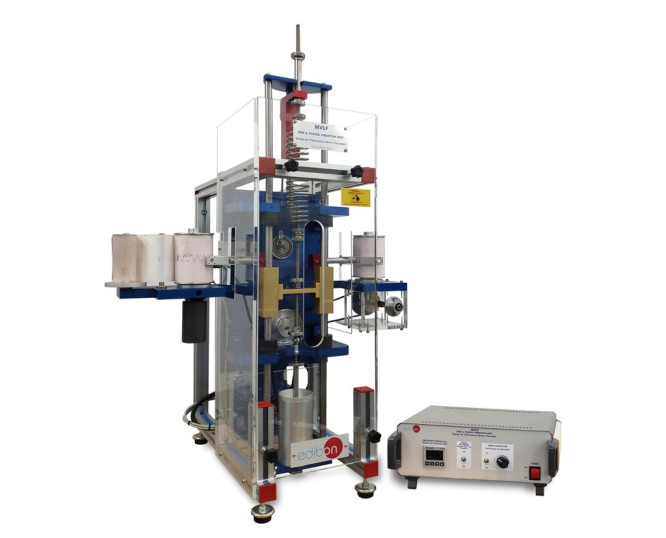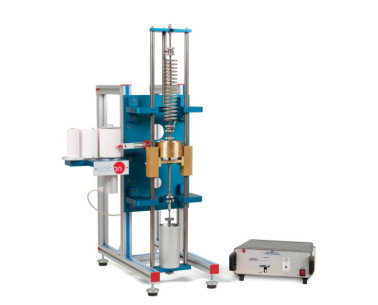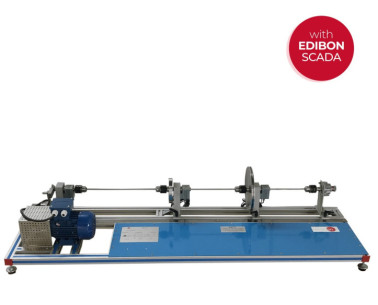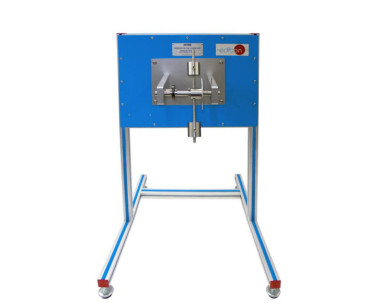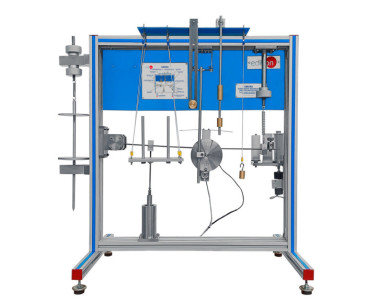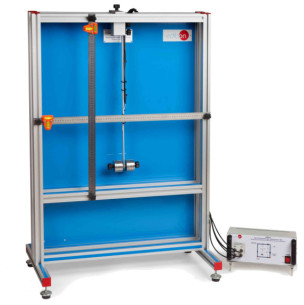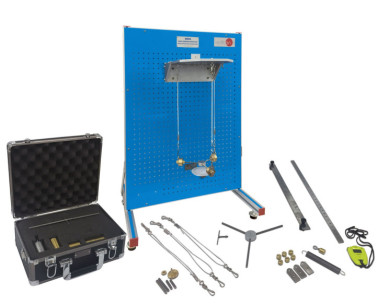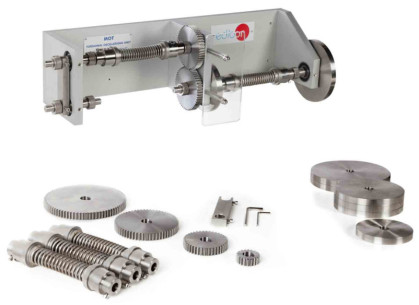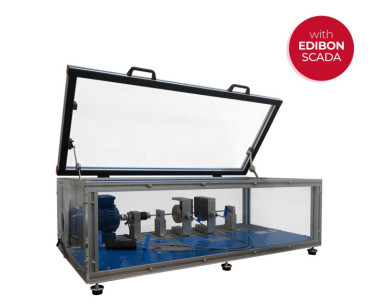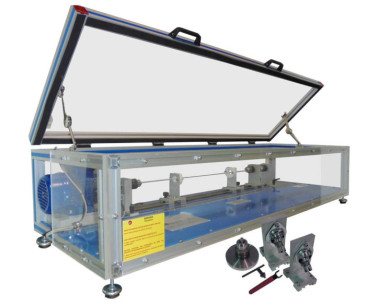MVLF Unité de Vibrations Libres et Forcées
SYSTEMES INNOVANTS
L'Unité de Vibrations Libres et Forcées, "MVLF", a été conçu par EDIBON pour effectuer des démonstrations et des expériences qui permettent de comprendre les vibrations libres et forcées d'un simple système ressort-masse-amortisseur.
Expansions
Laboratories
NOUVELLES LIÉES
Description Générale
L'Unité de Vibrations Libres et Forcées, "MVLF", a été conçu par EDIBON pour couvrir une gamme de démonstrations et d'expériences qui permettent à l'utilisateur de comprendre les vibrations libres et forcées d'un simple système ressort-masse-amortisseur. Des ajustements simples peuvent être apportés à l'unité et le mouvement de la masse peut être facilement observé et enregistré sur les enregistreurs à stylo fournis.
Une caractéristique de l'unité qui aborde pour la première fois les problèmes des vibrations forcées amorties est la simplicité de sa présentation, de sorte que les phénomènes de vibrations libres et forcées peuvent être facilement observés.
Des expériences peuvent être menées par les élèves pour étudier la relation entre la masse du corps, la raideur du ressort et la période/ fréquence d'oscillation et pour observer l'effet de l'amortissement visqueux sur le système.
Les composants de base de l'unité consistent en un cadre rigide avec des guides de chariot de masse verticaux, une plaque de montage supérieure pour le ressort, une plaque de montage inférieure pour l'amortisseur et un moteur à vitesse variable et une unité d'entraînement pour les expériences de vibration forcée. Le chariot de masse est contraint par des rouleaux qui roulent le long des guides verticaux pour fournir un seul degré de liberté avec un amortissement incontrôlé minimum.
La fréquence des oscillations peut être mesurée avec un capteur optique.
Deux stylos, fixés au cadre vibrant, et deux bandes de papier permettent de réaliser des enregistrements amplitude/temps et des enregistrements amplitude/phase.
Deux méthodes de forçage des vibrations sont prévues : une masse déséquilibrée en rotation et un déplacement périodique jusqu'au point d'appui du ressort.
Des ressorts de différentes raideurs et masses appropriées sont fournis. L'amortisseur est réglable pour fournir une large gamme d'amortissement.
Une console de commande fixée au châssis contient l'unité de contrôle de vitesse et un compteur indicateur de fréquence.
Des exercices et pratiques guidées
EXERCICES GUIDÉS INCLUS DANS LE MANUEL
- Étude de la relation entre la masse du corps, la raideur du ressort et la période/fréquence d'oscillation pour un système de masse à ressort simple à un degré de liberté.
- Etude de la relation entre la force appliquée, la viscosité de l'huile et la vitesse pour différents réglages de l'amortisseur d'huile réglable.
- Observation de la façon dont la variation du degré d'amortissement affecte la réponse d'un système mécanique de second ordre à une entrée de pas.
- Observation des vibrations libres d'un système à un degré de liberté.
- Etude de l'effet de l'amortissement visqueux sur les vibrations libres d'un système simple ressort-masse-amortisseur.
- Détermination du taux d'amortissement pour un système ressort/masse/amortisseur donné.
- Étude de la relation entre l'amplitude de la vibration en régime permanent de la masse vibrante et la fréquence de forçage pour différents rapports d'amortissement. Vibrations induites par l'application d'une force perturbatrice périodique à la masse.
- Étude de la relation entre l'amplitude de la vibration en régime permanent de la masse vibrante et la fréquence de forçage pour différents rapports d'amortissement. Vibrations induites par un déplacement périodique du point d'appui du ressort.
- Étude de la relation de phase entre la masse vibrante et le déplacement périodique du support du ressort pour différents rapports d'amortissement.
- Étude des vibrations induites par l'application d'une force perturbatrice périodique à la masse dans un système visqueux amorti.
- Étude des vibrations induites par un déplacement périodique du point d'appui du ressort dans un système visqueux amorti.
UNITÉS SIMILAIRES DISPONIBLES
EQUIPEMENT COMPLEMENTAIRE
Unité pour Étude de Vibrations Torsionnelles, Contrôlée par Ordinateur (PC)
Unité de Vibration de Ressorts Hélicoïdaux
Unité de Vibrations Libres
Unité Intégrale d'Analyse des Vibrations Mécaniques
Unité d'Étude de Vibration Libre en Barres
Unité de Mouvement Harmonique Simple
Unité d'Oscillation de Torsion
Unité pour l'Étude de la Vitesse Critique, Contrôlée par Ordinateur (PC)
Unité d'Étude de Rotation d'Axes
Qualité

Service après vente

 Préférences sur les cookies
Préférences sur les cookies

